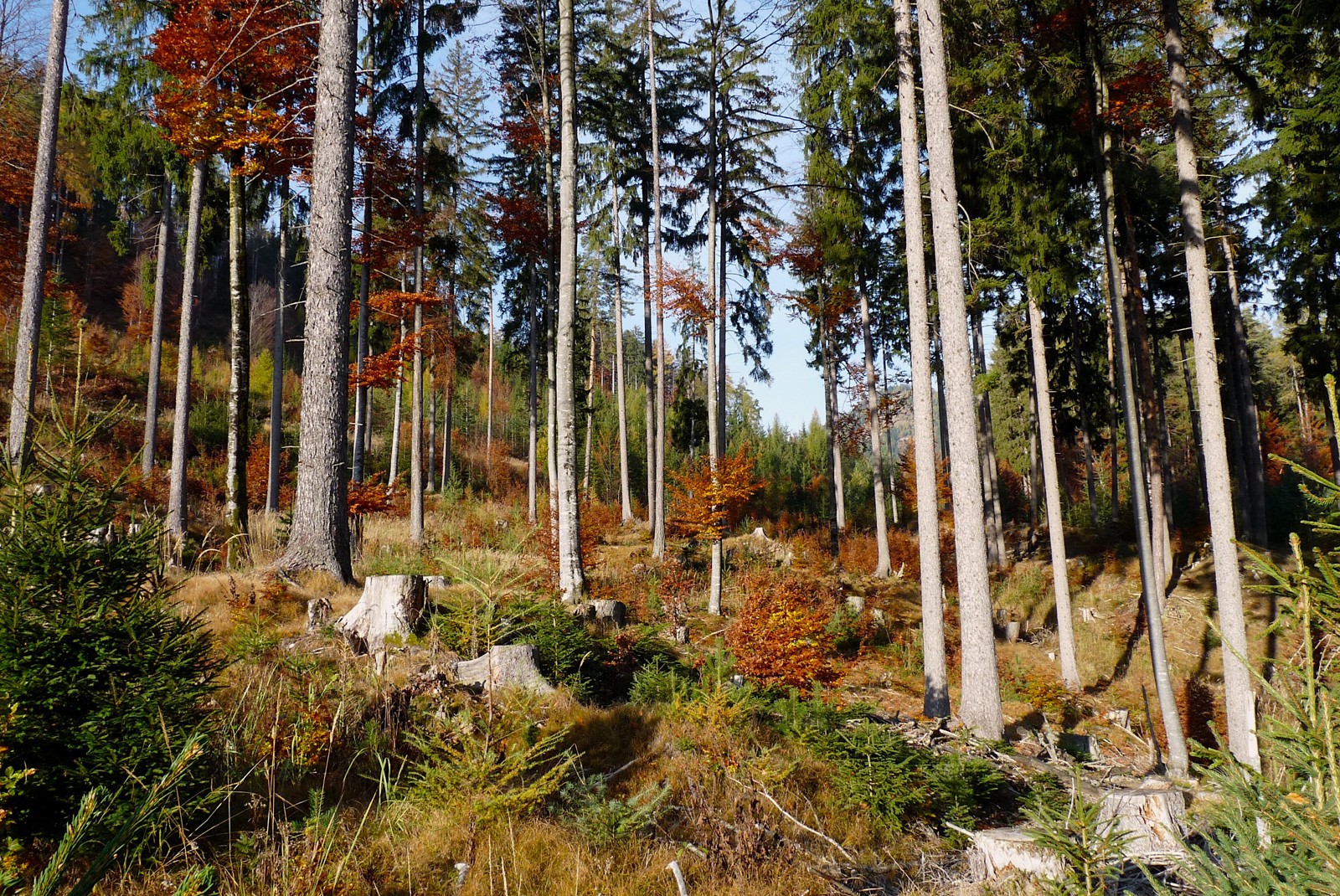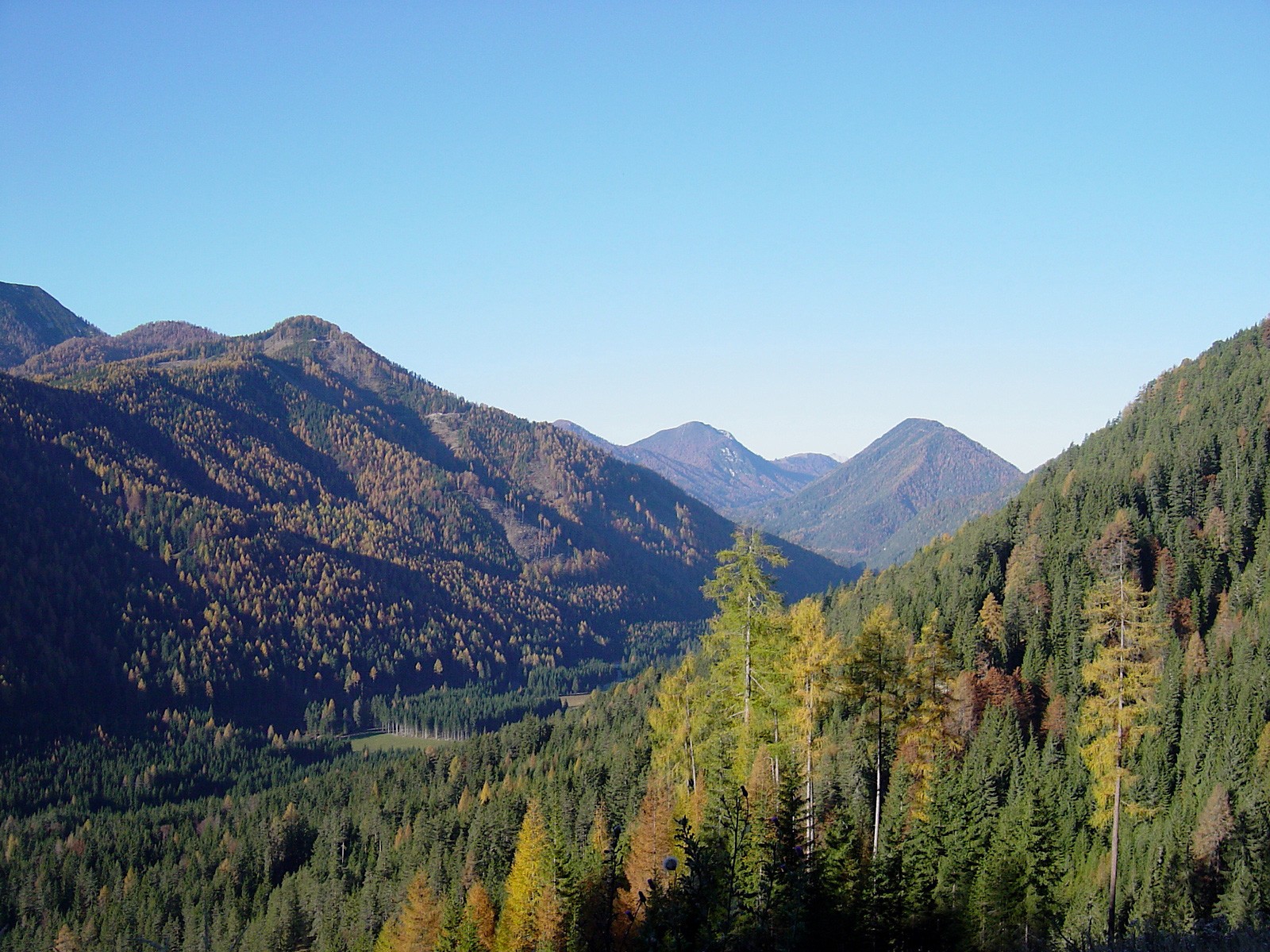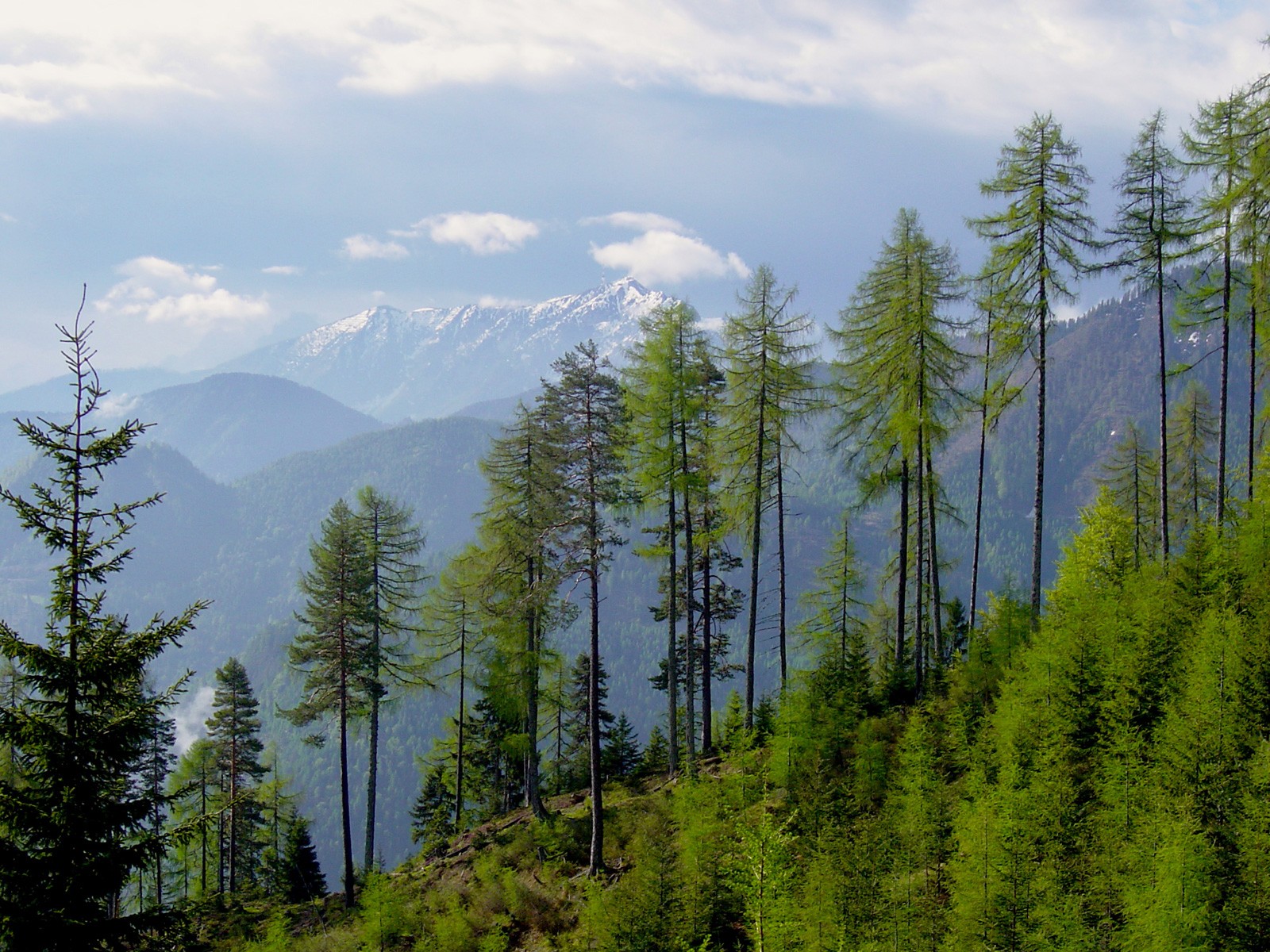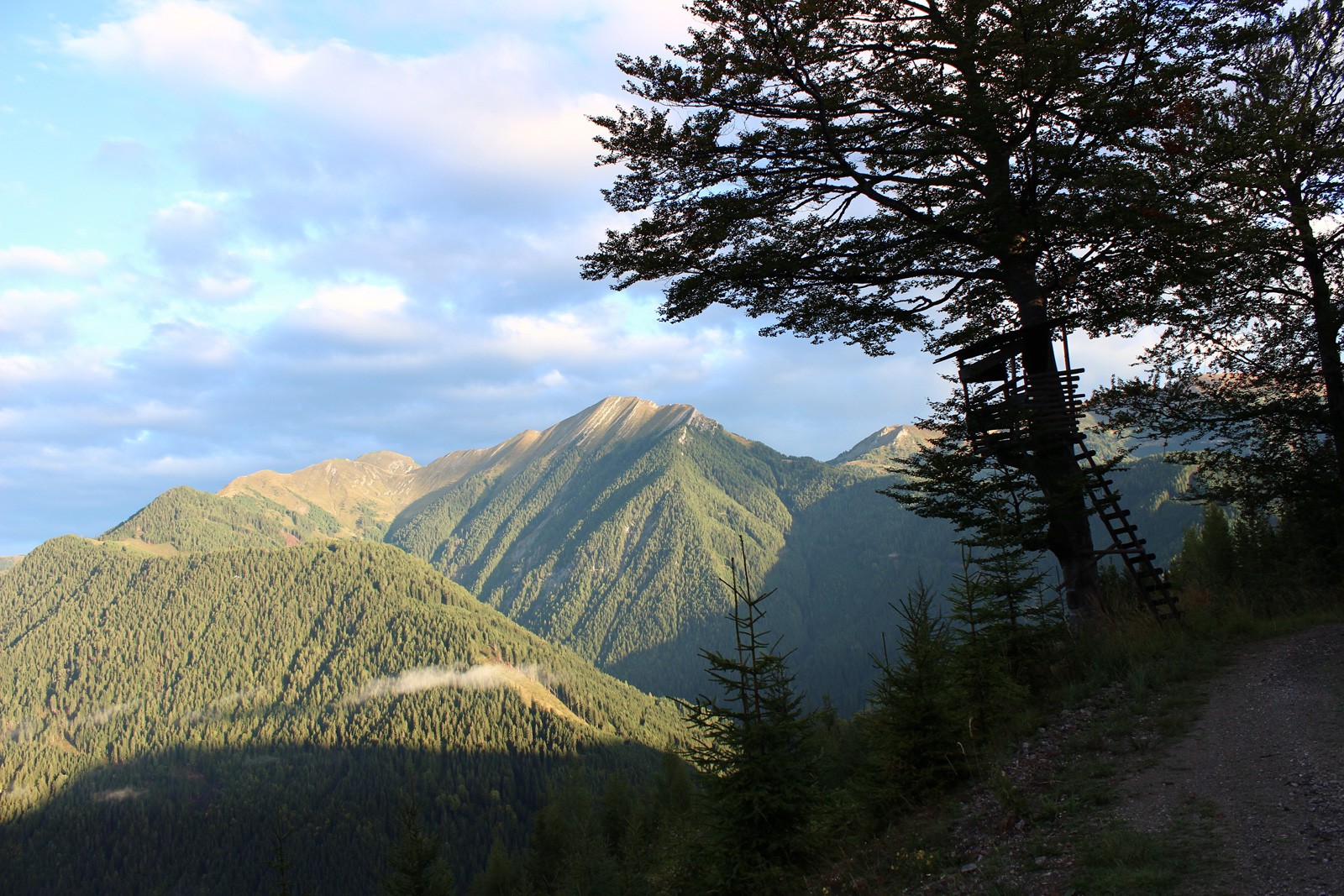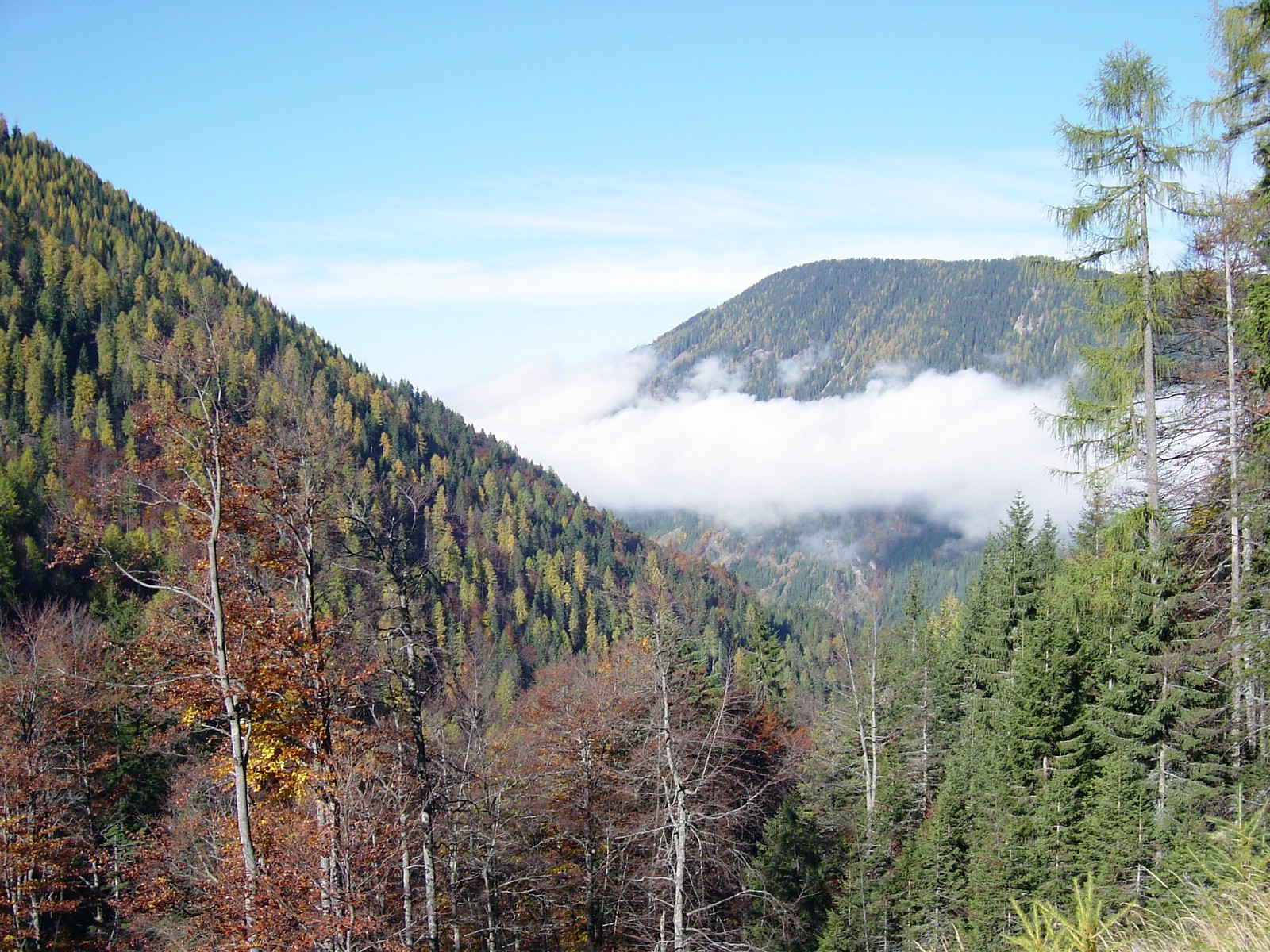
The Foscari Widmann Rezzonico Forestry Department is one of the largest forestry operations in Carinthia and one of the most important in Austria. Its operating area stretches from the western outskirts of Villach in the east to the shores of Lake Weissensee in the west. The use of state-of-the-art forestry methods and production technologies is what sets the company apart today. Over the years, the Foscari Forestry Company has earned a reputation as one of the most respected timber suppliers on the national and international market thanks to the quality of its timber production and the efficiency of its services.
Location
The forest management office is located in Paternion, and the forest areas are situated in the northern part of the Gailtal Alps, in the district of Villach-Land.
DOWNLOAD MAP (PDF)
Dimensions
Approximately 8,900 hectares, of which:
- Productive forest (forest subject to economic activity and partially protected), 7,500 ha (A)
- Protected forest not in production 500 ha (B)
- Natural forest reserve (contractual nature conservation area) 130 hectares (C)
- Agricultural land 75 hectares (D)
- Water bodies, alpine pastures, unproductive wasteland (E)
Geological features
The dominant rock types are:
- Dolomite
- Limestone and red sandstone formations
Climate
Subalpine, warm in summer.
The Gailtal Alpine peaks receive 1,700 mm of precipitation annually, while the Drau Valley valleys receive 1,150 mm. Precipitation peaks in late spring and autumn. Average temperature: up to 8 °C on an annual average.
Soil
The predominant soil type in the Gailtal Alps is rendzina, followed by brown loam rendzina and calcareous brown loam.
Growth area
Southern Alpine foothills with spruce/silver fir/beech forest as the dominant community in the mountainous altitudes. In the subalpine altitude, spruce-larch forest is the dominant community.
The following is the distribution of tree species on the property:
| Tree species | Forest in productive use | Partially protected forest |
| Spruce | 61.9 % | 48.8 % |
| White Fir | 3.6 % | 6.1 % |
| Larch | 16.9 % | 19.1 % |
| Pine | 8.2 % | 13.9 % |
| Beech | 9.4 % | 12.4 % |
Over 90% of the forest area is located at low mountain (700-1000 m) to high mountain (1250-1550 m) altitudes.
The growing area is characterised by optimal growth of almost all major tree species (spruce, fir, larch, beech), with hop beech, service tree and flowering ash also occurring in warmer locations.
Road network
Forest roads (350 km, equivalent to approximately 46 linear metres per hectare of productive forest) and, due to the terrain, only a small number of forest roads (5 linear metres per hectare).
The excellent accessibility of the forests via forest roads allows the production of logs up to 14 (16) metres in length in all the main roundwood classes.
Harvesting methods
- 25% fully mechanised timber harvesting or tractor delivery
- 75% Cable crane transport uphill/downhill
- In exceptional cases (calamity) by manual transport or helicopter
Annual timber harvest (average of the last 10 years)
Final cut: 33.900 fm
Intermediate cut: 7.600 fm
Overall cut: 41.500 fm



